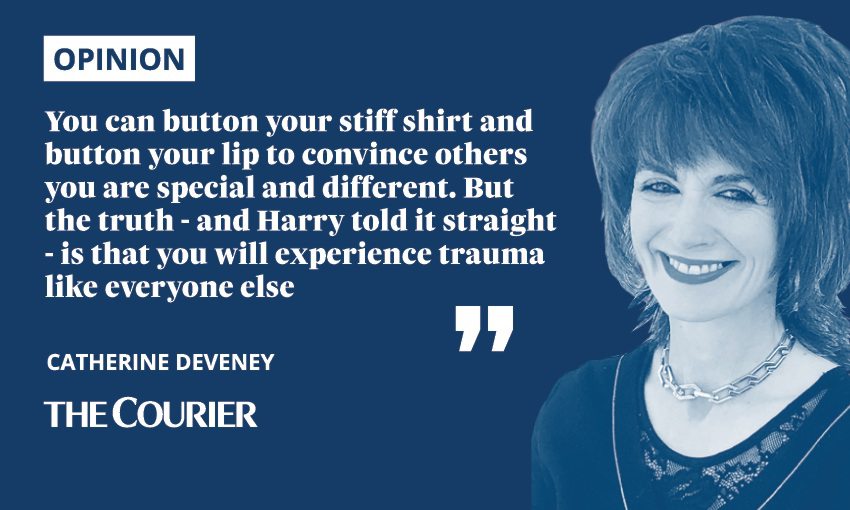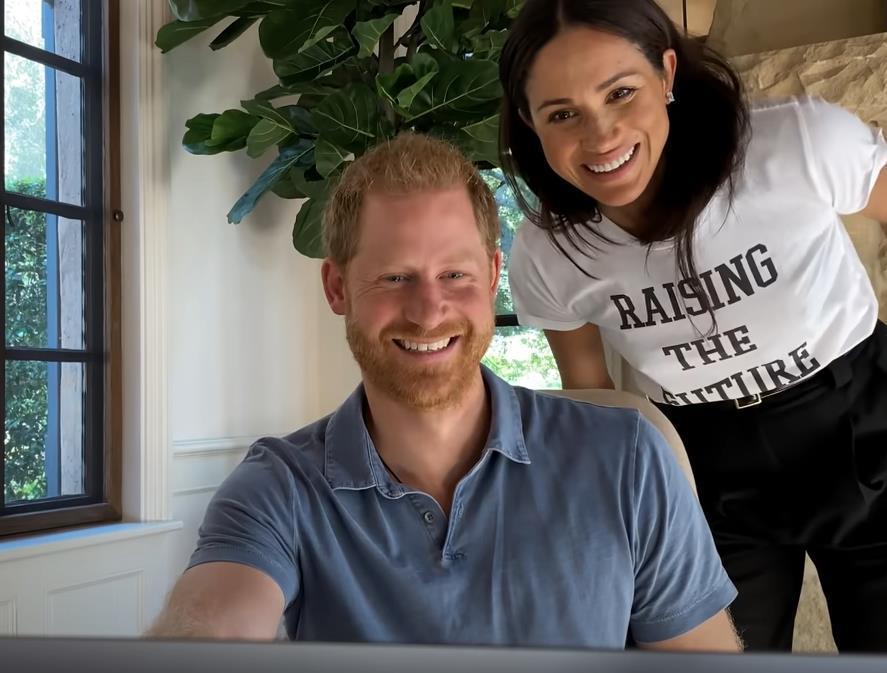In the fallout surrounding Prince Harry’s Apple television series on mental health with Oprah Winfrey, there has been the sniff of Old Blighty stuffiness.
Some feel poor old Harry is now under the thrall of nutty Californian Meghan, who has lured him into wacky ways involving spinach drinks and off-the-wall behaviour, like talking about your actual feelings.
While William delivered a suitably restrained speech to the Church of Scotland assembly about seeking solace in the kirk and countryside following the death of his mother, Harry talked about drink, drugs and trauma, allowing himself to be filmed with his eyes closed and arms crossed, tapping his shoulders while undertaking EMDR therapy.

Eye Movement Desensitisation Reprocessing is not a new therapy, though the recent publicity makes it sound like some quirky novelty that only rich folk with enough time on their hands to be traumatised will undertake.
In fact, it has been around since the late 1980s, the same period as Cognitive Behavioural Therapy.
CBT became the NHS’s flagship therapy, but most clinical trials show EMDR has better results in shorter timespans.
Its move into the mainstream began long before Harry. In recent months, NHS Highland has invested in EMDR training for its psychology teams. In fact, Harry’s therapist has been involved in delivering that training.
Trauma – the great leveller
The very notion of royalty, of meriting admiration and special privilege simply because of the family you are born into, is so ridiculous it baffles me.
You can sleep on feather beds and wear designer threads if you like. You can button your stiff shirt and button your lip to convince others you are special and different.
But the truth – and Harry told it straight – is that you will experience trauma like everyone else.
It is easy to see that the emperor is wearing no clothes when you are an onlooker. Much harder to be the emperor and acknowledge you are naked. Harry has done just that.
In its way, his interview with Winfrey was as sensational as his mother’s all those years ago. It was a bullet to the heart of royal family values. Who talked to the little boy who lost his mother? “Nobody,” he said.
His trauma exposed that royal façade of silent strength that masks the essential truth at the heart of human existence: we are all vulnerable. We are all naked.
Keep talking
Harry has been accused of betrayal – ironic given the betrayal that lack of communication represented to a troubled child – and dismissed as emotionally incontinent.
“Put a sock in it,” say the right wing commentators. Keep talking, I say.
Betrayal? Nonsense. He has stood in solidarity with his wife and children; with those who experience mental illness; with those who cry and those who struggle. In other words, all of us.
I applaud every last word he uttered in his interview, but also the authenticity with which he delivered it. Allowing the viewer into his EMDR session was brave, like allowing the nation to see you in your pyjamas.
EMDR is not pop science or pap psychology; it has a neurological basis. It was discovered by accident by American psychologist and teacher, Francine Shapiro, when she was out walking.
She realised that her eyes were moving rapidly from side to side when she thought about things that troubled her and this was having a calming effect.
From that simple observation grew years of study, research and training that resulted in a highly effective – and cost effective – therapy for many mental health issues, including depression, anxiety and PTSD.
Grannies know
The rapid eye movements, and shoulder “tapping” that Harry was doing, were part of the cognitive reprocessing that EMDR enables.
Simple things are also important. In Zimbabwe, the documentary showed us “granny”, the village woman who established “the friendship bench” – a seat at the heart of the village where anyone who was troubled could sit with granny and pour out their problems.
Granny knew what life was about. We all need to be loved, she observed; we all need to be understood.
Most of us know what it feels like to stand outside that secure place of love and understanding
Most of us know what it feels like to stand outside that secure place of love and understanding, when the fragile cords that bind us to others in life feel like they have been snipped.
The times when we are locked inside the prison of our own minds, bouncing off the walls of our own intrusive thoughts.
That doesn’t so much make us ill, as make us human. And humans, as Harry so eloquently illustrated, are stronger when they tell it as it really is.

